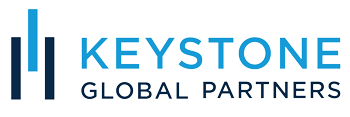This article was originally published on Forbes.com on December 20, 2022. Written by Peyton Carr.
Alternative investments, once rarely found outside the investment portfolios of the ultra-wealthy, family offices, pensions, endowments, and sovereign wealth funds, have become more mainstream as adoption grows and barriers to entering the asset class are decreasing. Many new players have entered the market over the last five years offering education and alternative investment strategies at lower commitment entry points. NASDAQ reports that by 2025, total alternative investments under management are projected to reach $17.2 trillion—a four-fold increase since 2010.
Also driving this asset class is high inflation, market volatility, and 2022 bond market performance causing many investors and advisors who’ve hesitated to invest in these wealth-building strategies to reconsider other options for diversification.
Investors have many alternative investment options available to them, and building out such a portfolio or program can improve the overall risk and return characteristics of a portfolio when properly implemented. Still, there are unique challenges in doing so since the unpredictability of private market cashflows can be challenging for investors with liquidity and risk constraints.
Alternative investments are a core asset class for our clients, and below are five key considerations that qualified investors and advisors who invest in alternatives should consider:
Selectivity & Diligence
Alternative investments need to be carefully selected and run through the proper diligence channels. Choosing top-quartile performers is paramount. According to a report from JPMorgan, the spread between top-quartile and bottom-quartile managers is 21.3% for Private Equity, 34.5% for Venture Capital, and 13.3% for Hedge Funds. This compares to a spread of 1.8% for Global Public Equities, for example. According to Blackstone, nearly 60% of top-quartile managers remain above the median of their subsequent funds. Having the right access channels is imperative. I’ve seen too many investors and advisors settle for inferior funds or managers due to their limited access or diligence process. Be selective, diligent, and patient.
Timing
Building out a private investment program is a multi-year process and requires time and dedication. For a new investor, it can take five to seven years to reach their target allocation. It can take 10+ years for the full maturity of a private equity fund, for example. Money invested is typically locked up and if an individual needs access to liquidity, they may not be able to liquidate their investments. Investors should carefully consider their liquidity needs and understand that this is a long-term strategy that requires planning and discipline.
Cashflows
Because of how a capital call drawdown structure works with some private investments — private equity, for example — the investor needs to model the expected capital call and distribution schedules, as well as the long-term expectations of the asset class and the portfolio. Only then can you optimize your commitment amounts and timing, better estimate future liquidity needed, and achieve your target alternative investment program allocation without overshooting or under allocating. As an example, cash flow drawdowns are typically more concentrated during the first few years, and different asset classes have different drawdown schedules.
Scaling and Maintaining the Allocation
Vintage diversification, or rather, investing over a multiyear period, is important. Funds can have good and bad years, impacting returns. Investors just getting started should take care not to over-allocate in a particular vintage year in efforts to ramp up quickly. Equally important is having an annual pacing plan determining what commitments to new funds are required to achieve or maintain the target allocation. When an investor receives a distribution, it decreases the overall allocation and decreases exposure. This needs to be accounted for via a recommitment strategy; otherwise, the total exposure will trail off.
Liquidity and Diversification
A properly designed alternative program should be diversified across multiple strategies and vintages and can range from defensive to growth focused. The calibrated and optimized mix will ultimately depend on the client’s risk tolerance, goals, and liquidity requirements. Determining client level liquidity requirements and stress testing the portfolio to simulate managing commitments through market volatility is necessary to prevent any cashflow shortages or unexpected outcomes.
Conclusion
Building out an alternative investment program requires a disciplined approach to portfolio construction, implementation, and maintenance. It is very different than investing in public markets where you can quickly and efficiently achieve a target asset allocation. When building out a private investment portfolio, many of the private markets commitments are drawn down over a series of years and returned later. Capital call drawdowns can vary significantly between asset classes, managers, and investment cycles, which is why it is important when investing in alts to fully understand the asset class before including them in an investment portfolio.
The information and opinions provided in this material are for general informational purposes only and should not be considered as tax, financial, investment, or legal advice. The information is not intended to replace professional advice from qualified professionals in your jurisdiction.
Tax laws and regulations are complex and subject to change, and their application can vary widely based on the specific facts and circumstances involved. Any tax information or advice in this article is not intended to be, and should not be, used as a substitute for specific tax advice from a qualified tax professional.
Investment advice in this article is based on the general principles of finance and investing and may not be suitable for all individuals or circumstances. Investments can go up or down in value, and there is always the potential of losing money when you invest. Before making any investment decisions, you should consult with a qualified financial professional who is familiar with your individual financial situation, objectives, and risk tolerance.
